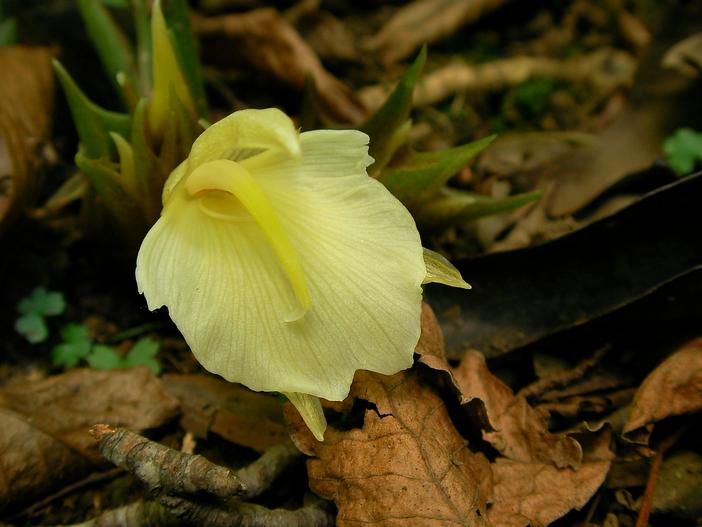Japanese Ginger
(Zingiber mioga)
Japanese Ginger (Zingiber mioga)
/
/

yamatsu
CC0
Image By:
yamatsu
Recorded By:
Copyright:
CC0
Copyright Notice:
Photo by: yamatsu | License Type: CC0 | License URL: http://creativecommons.org/publicdomain/zero/1.0/deed.en | Uploader: Pixeltoo | Publisher: Wikipedia Commons














Estimated Native Range
Summary
Zingiber mioga, commonly known as Japanese Ginger, is a deciduous perennial herb native to the understory of forests and shaded stream banks in East Asia, particularly Japan, Korea, and China. It typically grows to a height of 2-3 feet and a width of 1-2 feet. The plant features upright stems with lance-shaped leaves and small, yellowish-white flowers that appear near the ground in late summer to early fall. The flowers are somewhat hidden by the foliage and are not particularly showy, but the edible flower buds and flavorful shoots are highly valued in culinary applications. Japanese Ginger is known for its ornamental foliage, especially in the variegated cultivars ’Dancing Crane’, ’Silver Arrow’, and ’White Feather’, which have striking patterns but are less cold-hardy than the green-leaved forms.
Japanese Ginger is appreciated for its culinary uses, as the flower buds and young shoots are used in traditional Japanese dishes. It is also planted for its attractive foliage in woodland gardens, shade gardens, and as a ground cover. This plant prefers part shade but can tolerate full sun in cooler climates. It requires medium amounts of water and well-drained soil with rich organic matter. While it is frost-tolerant to −16 °C (3 °F), protection from harsh winter conditions is recommended for the variegated cultivars. Japanese Ginger can be susceptible to root rot in overly wet conditions and may require division every few years to maintain vigor. It is not typically invasive but should be monitored to ensure it does not spread beyond its desired area in the garden.CC BY-SA 4.0
Japanese Ginger is appreciated for its culinary uses, as the flower buds and young shoots are used in traditional Japanese dishes. It is also planted for its attractive foliage in woodland gardens, shade gardens, and as a ground cover. This plant prefers part shade but can tolerate full sun in cooler climates. It requires medium amounts of water and well-drained soil with rich organic matter. While it is frost-tolerant to −16 °C (3 °F), protection from harsh winter conditions is recommended for the variegated cultivars. Japanese Ginger can be susceptible to root rot in overly wet conditions and may require division every few years to maintain vigor. It is not typically invasive but should be monitored to ensure it does not spread beyond its desired area in the garden.CC BY-SA 4.0
Plant Description
- Plant Type: Herb
- Height: 2-3 feet
- Width: 1-2 feet
- Growth Rate: Moderate
- Flower Color: N/A
- Flowering Season: Summer, Fall
- Leaf Retention: Deciduous
Growth Requirements
- Sun: Full Sun, Part Shade
- Water: Medium
- Drainage: Medium
Common Uses
Edible*Disclaimer: Easyscape's listed plant edibility is for informational use. Always verify the safety and proper identification of any plant before consumption., Low Maintenance, Potted Plant
Natural Habitat
Understory of forests and shaded stream banks in East Asia
Other Names
Common Names: Mioga Ginger, Japaningwer, Myoga
Scientific Names: , Zingiber mioga, Zingiber echuanense, Amomum mioga, Zingiber mijooka, Zingiber mioga var. variegatum, Zingiber sjooka,
GBIF Accepted Name: Zingiber mioga (Thunb.) Roscoe